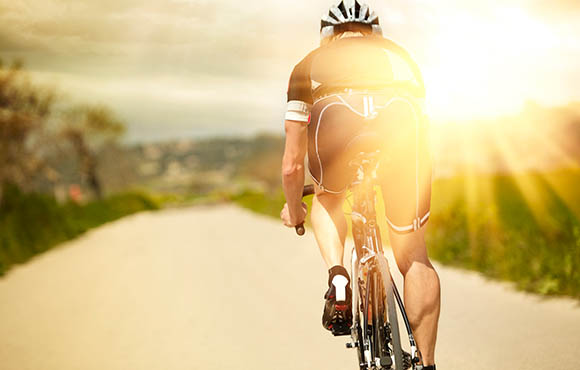Seat Too Low
2 of 10
Experiencing pain in the front of your knee? Your seat is probably too low, causing you to under-extend your pedal stroke. At the right seat height, your knee should be slightly bent at the bottom of your pedal stroke, when the crankarm is parallel to the seat tube, not perpendicular to the ground. To check this, pedal unclipped with your heels on the pedals. You should barely maintain contact with the pedal at the bottom of the stroke, without rocking your pelvis. Measure the distance between the bottom bracket and the top of the seat. This is your seat height. It should be very close to the product of your inseam (in centimeters) multiplied by 0.883.
Find:
Your Next RideAssume You Need All the Best Gear
3 of 10
You don't need fancy clothes, clipped-in shoes, or a top-of-the-line bike to become a cyclist. Sure, slick equipment can be a lot of fun, but there's nothing like smoking a bunch of high-end carbon bikes on a climb when you're riding an old beater. The important thing is that you just get out there and ride—and worry about any potential upgrades later.
Find:
Your Next RideBad Bike Fit
4 of 10
How your bike fits you is the most important aspect of riding. If the fit is painful, you're not going to spend much time in the saddle, no matter how excited you are to ride that new bike. To get the right fit, two elements are key: seat height and reach. The seat height should be high enough to give you a very slight bend in your knee when your foot is at the bottom of the pedal stroke. Proper reach means your arms and torso make a 45-degree angle over the bike. Too long, and your back will be sore reaching for the handlebars; too short and your knees will be too close to your arms. When you're shopping for a bike, make sure to take it for a test ride to see that the size is correct for you.
Find:
Your Next RideNot Maintaining Your Bike
5 of 10
You don't have to be a pro wrench, but routine maintenance will not only save you a bundle at the bike shop but also prolong the life of your bike. Check out these three super-easy maintenance tasks your bike mechanic wishes you'd do.
Find:
Your Next RideToo Much Too Soon
6 of 10
One of the biggest sources of injury comes from trying to take on too much mileage before you're ready. Build up slowly, ease in, and give your body time to adjust to new distances. Similarly, if you're on a training ride, don't start too fast and risk burnout and fatigue in the second half. Warm up during the first third of the ride, then settle into a rhythm for the second, and give it everything you've got for the final third.
Find:
Your Next RideNot Carrying a Spare or a Patch Kit
7 of 10
One minute you're out there on the trail, cruising along with the perfect tailwind, having the time of your life. Then that unmistakable sound of air hissing out of your tires shatters your peaceful reverie, and the party is over. If your flat tire backup plan is to phone a friend, take a few minutes and check out this guide to changing a tube or patching one. You won't believe how much more independent you'll feel with the proper tools on hand—a spare, a patch kit, levers, and a mini-pump—and the know-how to get yourself back on the road in 15 minutes.
Find:
Your Next RideNot Using Your Gears
8 of 10
Gears are your best friends on a climb, and your greatest source of speed on a long, rolling stretch. But it does take a little practice to get the hang of when and how to shift into your most efficient gear. Here's a basic guide to using all your gears.
Find:
Your Next RideNot Respecting the Pack
9 of 10
Group rides have their own protocol and etiquette for a reason—it's easy to cause a crash if your riding isn't predictable. If it's your first time riding with a new group, hang at the back, observe, and ask for help if you need it.
Find:
Your Next RideNot Refueling Enough
10 of 10
If you're only riding for an hour, you don't need to eat on the bike (but bring water). But if you're planning to ride over two hours, bring a snack along and start eating 45 minutes to an hour into your ride, and continue to eat small amounts every 15 to 20 minutes. Forgetting to refuel can put your body into a deficit and cause you to bonk—or go into a hypoglycemic state. Tiredness, irritability, dizziness, nausea, confusion—it's not a strong way to finish a ride.







Discuss This Article